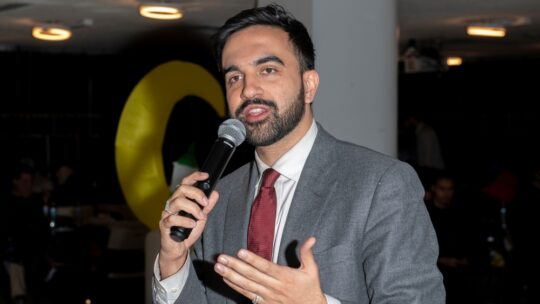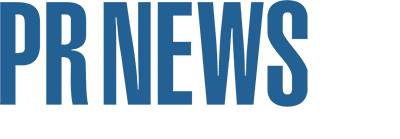
[Editor's Note: Democratic candidate for New York City Mayor, Zohran Mamdani, won the New York Mayoral Election on Nov. 4, 2025.]
Zohran Mamdani’s campaign in New York City’s mayoral Democratic primary really defined what it means to connect and win in the digital age. Grounded in multilingual storytelling, community-first outreach, intersectional identity and multichannel presence, his campaign is a communications blueprint, and here’s why:
Language & Narrative Clarity
Mamdani speaks in the cadence of kitchen-table conversations. Clear, issue-driven, relatable. Whether outlining free buses or rent freezes, his language is policy-forward, yet conversational and authentic. He has believability. This Instagram post is one such example.
View this post on Instagram
Throughout his campaign, he also spoke multiple tongues—English, Spanish, Urdu and Hindi, echoing past NYC Mayor Fiorello La Guardia’s multilingual legacy.
Community & Coalition-Building
Mamdani’s campaign was communal and not transactional. He built a ‘multi-Asian’ alliance, earning endorsements like New York State Senator John Liu’s and led bilingual outreach in Queens, bringing South and East Asian voters into the fold. He actively engaged with the Black community, through policy alignment on issues like housing, policing and transit justice, and by showing up in spaces that matter, including at Rev. Al Sharpton’s National Action Network Saturday Action Rally.
His outreach extended to the Chinese-American community, with translated campaign materials, culturally sensitive canvassing and a recognition of the community’s deep-rooted civic presence in New York.
Interfaith dialogue became a staple: Mamdani visited mosques, churches, temples and synagogues, actively drawing from multiple faith traditions to build unity across lines. His campaign featured shared belonging and built intersectional coalitions through action, language and shared human values.
Identity & Religion: Breaking Muslim Stereotypes
As a Muslim with India-Ugandan roots, Mamdani remained clear about his identity, a rare move in American politics, where candidates may downplay faith to avoid backlash and stereotyping. He brought faith into public life, spoke of his hijab-wearing aunt’s experience with Islamophobia as formative and claimed his space unapologetically. In doing so, he rewrote the narrative from Muslim-as-outsider to Muslim-as-leader, shattering the notion that Muslim identity is incompatible with progressive, multi-faith, values-driven politics.
Youth Engagement & Digital Savvy
Mamdani’s campaign galvanized young New Yorkers through viral social videos—“good videos,” as The New Yorker noted, along with laser‐focused TikTok content and eye popping visual branding that translated into pop culture merchandising according to Mashable.
He also translated that digital momentum into real-world youth organizing: Student activists, progressive campus groups, and first-time voters formed a core part of the volunteer operation. As The City reported, nearly 30,000 volunteers, many under age 30, signed up, knocking on over 750,000 doors. This youth-led ground game directly matched Mamdani’s online energy with door-to-door presence. It is possibly this approach that helped more than double the number of New Yorkers who cast ballots during the nine days of early voting compared to four years ago, including a substantial number of first-time voters, according to a new analysis of turnout data by Gothamist.
Values-Driven Messaging
Even when identity was central, Mamdani led with values. Affordable housing, transit, public childcare. His communications always circled back to “who we are and what we stand for,” not “who you are.” This interview he did on Hot 97 is a good example of his value first, relatable messaging.
Key Takeaways for PR & Communications Professionals
-
Speak in Community Languages
Multilingual materials build inclusion and ownership, such as this video he did in Spanish. Using a community’s native language is a powerful gesture of inclusion that builds trust and unlocks access to those often ignored by mainstream messaging.
-
Identity Can Inform, Not Limit
Faith, cultural heritage and lived experience can be strategic assets. This video of Mamdani speaking in Hindi/Urdu, addressing the South Asian community, complete with relatable satirical Bollywood inserts, is an example of this. Moves like this enrich a narrative and help build deeper, more authentic connections.
-
Combine Online and Offline Efforts
Digital reach is crucial, but it must be backed by real-world visibility. True impact happens when social media amplification is supported by physical community presence. Pairing TikTok virality with multilingual door-to-door canvassing is an example of this.
-
Consistency is Key
There should be no disconnect between a campaign or brand's online image and its real-world presence. Showing the same clarity, authenticity and conviction on the ground as it does on screen, is important.
-
Lead with Policy-First Storytelling
Substance builds credibility. Rather than vague slogans, tangible solutions should be communicated that resonate across demographics. Messaging should be clear, informed and unafraid to go deep, even on tricky and controversial matters.
-
Engage Youth Through Values and Format
Communicate your campaigns with values that speak across divides and adapt messaging—framing content into formats that speak to younger voters. Through short videos, digital explainers and participatory canvassing such as this, meet youth where they are, and invite them into the experience.
-
Build Inclusive Coalitions
Strategic partnerships strengthen every facet of a campaign. Inclusion is a proven superpower.
Selina Rashid Khan is CEO & Founder, Lotus Client Management & Public Relations
